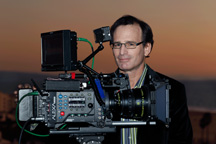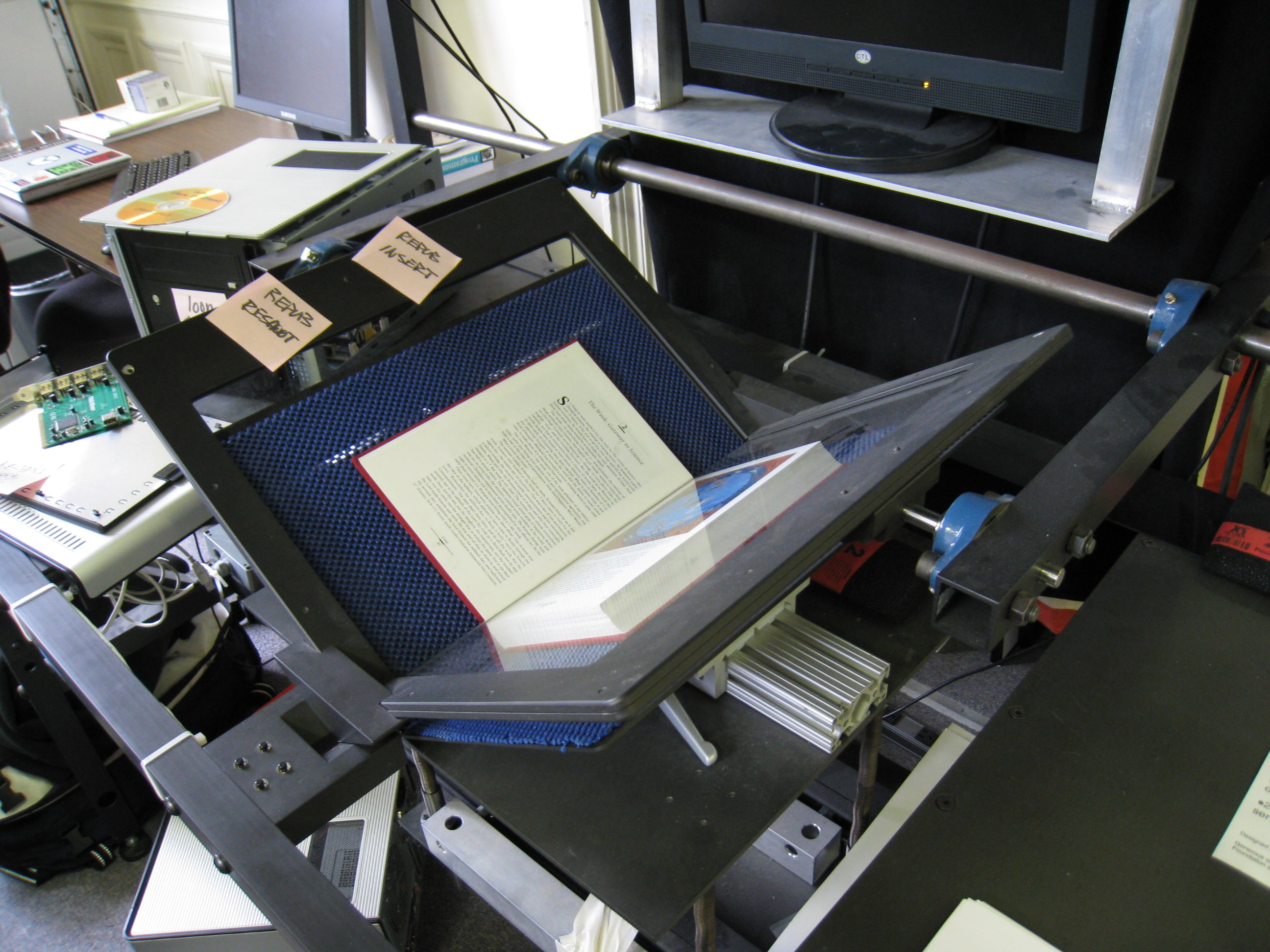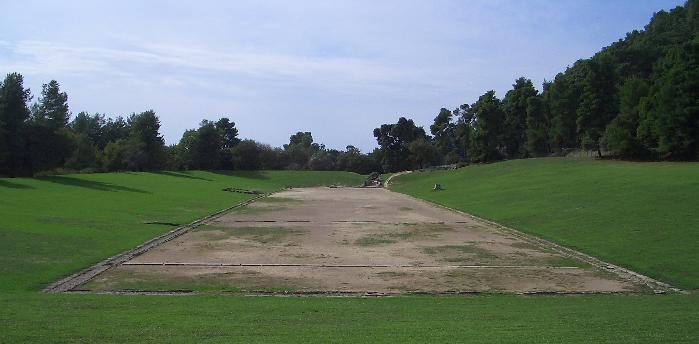|
Non Linear Editing
Non-linear editing is a form of offline editing for audio, video, and image editing. In offline editing, the original content is not modified in the course of editing. In non-linear editing, edits are specified and modified by specialized software. A pointer-based playlist, effectively an edit decision list (EDL), for video and audio, or a directed acyclic graph for still images, is used to keep track of edits. Each time the edited audio, video, or image is rendered, played back, or accessed, it is reconstructed from the original source and the specified editing steps. Although this process is more computationally intensive than directly modifying the original content, changing the edits themselves can be almost instantaneous, and it prevents further generation loss as the audio, video, or image is edited. A non-linear editing system (NLE) is a video editing (NLVE) program or application, or an audio editing (NLAE) digital audio workstation (DAW) system. These perform non-dest ... [...More Info...] [...Related Items...] OR: [Wikipedia] [Google] [Baidu] |
Footage
In filmmaking and video production, footage is raw, unedited material as originally filmed by a movie camera or recorded by a ( often special) video camera, which typically must be edited to create a motion picture, video clip, television show or similar completed work. Footage may also refer to sequences used in film and video editing, such as special effects and archive material (for special cases of this, see stock footage and B roll). Since the term originates in film, footage is only used for recorded images, such as film stock, videotapes or digitized clips – on live television, the signals from video cameras are instead called ''sources''. History The origin of the term "footage" is that early 35 mm silent film has traditionally been measured in feet and frames; the fact that film was measured by length in cutting rooms, and that there are 16 frames ( 4-perf film format) in a foot of 35 mm film which roughly represented 1 second of screen time ( frame rate) in s ... [...More Info...] [...Related Items...] OR: [Wikipedia] [Google] [Baidu] |
Video Editing Software
Video editing software, or a video editor is software used performing the post-production video editing of digital video sequences on a non-linear editing system. It has replaced traditional flatbed celluloid film editing tools and analog video tape-to-tape online editing machines. Video editing software serves a lot of purposes, such as filmmaking, audio commentary, and general editing of video content. In NLE software, the user manipulates sections of video, images, and audio on a sequence. These clips can be trimmed, cut, and manipulated in many different ways. When editing is finished, the user exports the sequence as a video file. Components Timeline NLE software is typically based on a timeline interface where sections moving image video recordings, known as clips, are laid out in sequence and played back. The NLE offers a range of tools for trimming, splicing, cutting and arranging clips across the timeline. Another kind of clip is a text clip, used to add text to a v ... [...More Info...] [...Related Items...] OR: [Wikipedia] [Google] [Baidu] |
Transfer (computing)
In computer technology, transfers per second and its more common secondary terms gigatransfers per second (abbreviated as GT/s) and megatransfers per second (MT/s) are informal language that refer to the number of operations transferring data that occur in each second in some given data-transfer channel. It is also known as sample rate, i.e. the number of data samples captured per second, each sample normally occurring at the clock edge. The terms are neutral with respect to the method of physically accomplishing each such data-transfer operation; nevertheless, they are most commonly used in the context of transmission of digital data. 1 MT/s is 106 or one million transfers per second; similarly, 1 GT/s means 109, or equivalently in the US/short scale, one billion transfers per second. Units The choice of the symbol ''T'' for ''transfer'' conflicts with the International System of Units, in which ''T'' stands for the tesla unit of magnetic flux density (so "Megatesla ... [...More Info...] [...Related Items...] OR: [Wikipedia] [Google] [Baidu] |
Digitizing
DigitizationTech Target. (2011, April). Definition: digitization. ''WhatIs.com''. Retrieved December 15, 2021, from https://whatis.techtarget.com/definition/digitization is the process of converting information into a digital (i.e. computer-readable) format.Collins Dictionary. (n.d.). Definition of 'digitize'. Retrieved December 15, 2021, from https://www.collinsdictionary.com/dictionary/english/digitize The result is the representation of an object, image, sound, document, or signal (usually an analog signal) obtained by generating a series of numbers that describe a discrete set of points or samples. The result is called '' digital representation'' or, more specifically, a '' digital image'', for the object, and ''digital form'', for the signal. In modern practice, the digitized data is in the form of binary numbers, which facilitates processing by digital computers and other operations, but digitizing simply means "the conversion of analog source material into a numerica ... [...More Info...] [...Related Items...] OR: [Wikipedia] [Google] [Baidu] |
Transcoding
Transcoding is the direct digital-to-digital conversion of one encoding to another, such as for video data files, audio files (e.g., MP3, WAV), or character encoding (e.g., UTF-8, ISO/IEC 8859). This is usually done in cases where a target device (or workflow) does not support the format or has limited storage capacity that mandates a reduced file size, "Advancements in Compression and Transcoding: 2008 and Beyond", Society of Motion Picture and Television Engineers (SMPTE), 2008, webpageSMPTE-spm or to convert incompatible or obsolete data to a better-supported or modern format. In the analog video world, transcoding can be performed just while files are being searched, as well as for presentation. For example, Cineon and DPX files have been widely used as a common format for digital cinema, but the data size of a two-hour movie is about 8 terabytes (TB). That large size can increase the cost and difficulty of handling movie files. However, transcoding into a JPEG2000 ... [...More Info...] [...Related Items...] OR: [Wikipedia] [Google] [Baidu] |
Broadcasting
Broadcasting is the distribution (business), distribution of sound, audio or video content to a dispersed audience via any electronic medium (communication), mass communications medium, but typically one using the electromagnetic spectrum (radio waves), in a :wikt:one-to-many, one-to-many model. Broadcasting began with AM radio, which came into popular use around 1920 with the spread of vacuum tube radio transmitters and radio receiver, receivers. Before this, all forms of electronic communication (early radio, telephone, and telegraph) were wikt:one-to-one, one-to-one, with the message intended for a single recipient. The term ''broadcasting'' evolved from its use as the agricultural method of sowing seeds in a field by casting them broadly about. It was later adopted for describing the widespread distribution of information by printed materials or by telegraph. Examples applying it to "one-to-many" radio transmissions of an individual station to multiple listeners appeared as ... [...More Info...] [...Related Items...] OR: [Wikipedia] [Google] [Baidu] |
Desktop Video
Desktop video refers to a phenomenon lasting from the mid-1980s to the early 1990s when the graphics capabilities of personal computers such as Commodore's Amiga, the Apple Macintosh II and specially-upgraded IBM PC compatibles had advanced to the point where individuals and local broadcasters could use them for analog non-linear editing (NLE) and vision mixing in video production. Despite the use of computers, desktop video should not be confused with digital video since the video data remained analog. Full-screen, full-motion video's vast storage requirements meant that the promise of digital encoding would not be realized on desktop computers for at least another decade. Description There were multiple models of genlock cards available to synchronise the content; the Newtek Video Toaster was commonly used in Amiga and PC systems, while Mac systems had the SuperMac Video Spigot and Radius VideoVision cards. Apple later introduced the Macintosh Quadra 840AV and Centris 660AV sy ... [...More Info...] [...Related Items...] OR: [Wikipedia] [Google] [Baidu] |
Word Processing
A word is a basic element of language that carries an objective or practical meaning, can be used on its own, and is uninterruptible. Despite the fact that language speakers often have an intuitive grasp of what a word is, there is no consensus among linguists on its definition and numerous attempts to find specific criteria of the concept remain controversial. Different standards have been proposed, depending on the theoretical background and descriptive context; these do not converge on a single definition. Some specific definitions of the term "word" are employed to convey its different meanings at different levels of description, for example based on phonological, grammatical or orthographic basis. Others suggest that the concept is simply a convention used in everyday situations. The concept of "word" is distinguished from that of a morpheme, which is the smallest unit of language that has a meaning, even if it cannot stand on its own. Words are made out of at least on ... [...More Info...] [...Related Items...] OR: [Wikipedia] [Google] [Baidu] |
Information Technology
Information technology (IT) is the use of computers to create, process, store, retrieve, and exchange all kinds of data . and information. IT forms part of information and communications technology (ICT). An information technology system (IT system) is generally an information system, a communications system, or, more specifically speaking, a computer system — including all hardware, software, and peripheral equipment — operated by a limited group of IT users. Although humans have been storing, retrieving, manipulating, and communicating information since the earliest writing systems were developed, the term ''information technology'' in its modern sense first appeared in a 1958 article published in the ''Harvard Business Review''; authors Harold J. Leavitt and Thomas L. Whisler commented that "the new technology does not yet have a single established name. We shall call it information technology (IT)." Their definition consists of three categories: techniques for pro ... [...More Info...] [...Related Items...] OR: [Wikipedia] [Google] [Baidu] |
Cut, Copy, And Paste
In human–computer interaction and user interface design, cut, copy, and paste are related commands that offer an interprocess communication technique for transferring data through a computer's user interface. The ''cut'' command removes the selected data from its original position, while the ''copy'' command creates a duplicate; in both cases the selected data is kept in temporary storage (the clipboard). The data from the clipboard is later inserted wherever a ''paste'' command is issued. The data remains available to any application supporting the feature, thus allowing easy data transfer between applications. The command names are an interface metaphor based on the physical procedure used in manuscript editing to create a page layout. This interaction technique has close associations with related techniques in graphical user interfaces (GUIs) that use pointing devices such as a computer mouse (by drag and drop, for example). Typically, clipboard support is provided by an ... [...More Info...] [...Related Items...] OR: [Wikipedia] [Google] [Baidu] |
Olympic Games
The modern Olympic Games or Olympics (french: link=no, Jeux olympiques) are the leading international sporting events featuring summer and winter sports competitions in which thousands of athletes from around the world participate in a variety of competitions. The Olympic Games are considered the world's foremost sports competition with more than 200 teams, representing sovereign states and territories, participating. The Olympic Games are normally held every four years, and since 1994, have alternated between the Summer and Winter Olympics every two years during the four-year period. Their creation was inspired by the ancient Olympic Games (), held in Olympia, Greece from the 8th century BC to the 4th century AD. Baron Pierre de Coubertin founded the International Olympic Committee (IOC) in 1894, leading to the first modern Games in Athens in 1896. The IOC is the governing body of the Olympic Movement (which encompasses all entities and individuals involved in the Oly ... [...More Info...] [...Related Items...] OR: [Wikipedia] [Google] [Baidu] |



.jpg)


